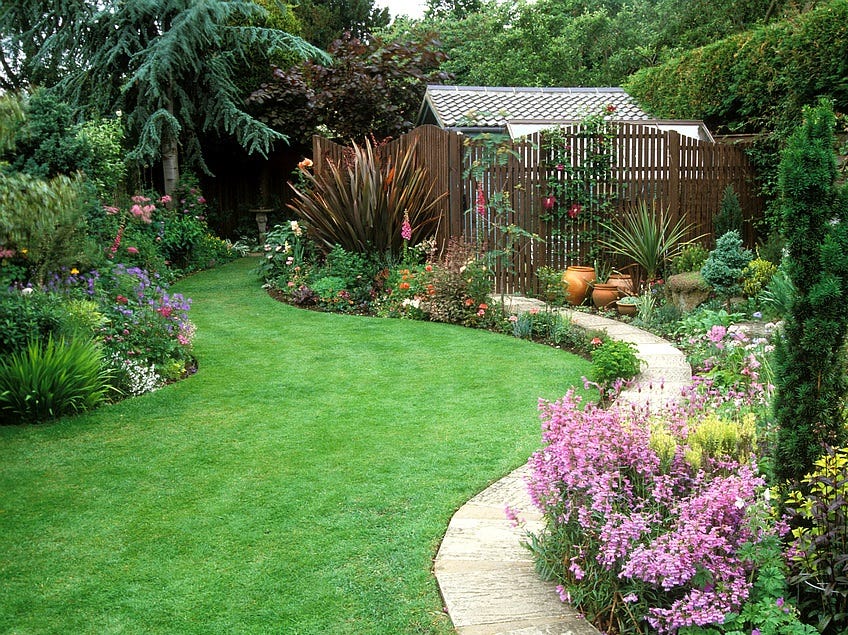Tackling a landscaping project on your own can be both rewarding and cost-effective—if you have the right tools. Whether you’re refreshing your backyard, building a garden path, or creating new flower beds, the right DIY landscaping tools can make all the difference.
In this guide, we’ll cover the best landscaping tools for homeowners, especially those just starting out. With the right mix of landscaping equipment for beginners, your outdoor project will be smoother, faster, and more enjoyable.
it will benefit yours, too!


No landscaping toolkit is complete without a sturdy shovel and spade. While they may seem similar, each has its purpose:
Shovel: Ideal for digging holes, moving soil, and transferring materials like mulch or gravel.
Spade: Great for edging garden beds, cutting through sod, and shaping the soil.
Pro Tip: Choose a carbon steel or stainless steel blade for durability, and look for ergonomic handles to reduce fatigue.
A wheelbarrow is essential when it comes to hauling heavy loads—soil, rocks, compost, or tools—from one spot to another.
When choosing one:
Look for dual-wheel options for better stability.
Choose a rust-resistant tray, especially if you live in a humid or rainy area.
This simple tool can save you hours of backbreaking labor.
These two rakes serve different but equally important purposes:
Garden rake: Useful for leveling soil, spreading mulch, and removing debris from flower beds.
Leaf rake: Perfect for gathering leaves, grass clippings, and light debris.
A flexible, wide leaf rake can make yard cleanup quick and easy, while a heavy-duty garden rake is your go-to for soil work.
Smaller projects like planting flowers or herbs call for hand tools:
Hand trowel: Ideal for digging small holes, transplanting seedlings, and mixing soil.
Weeder: Removes stubborn weeds at the root, helping keep garden beds neat and healthy.
These essential landscaping tools are perfect for precise work where larger tools are too bulky.
Keeping plants trimmed and healthy is a major part of any landscaping project. That’s where pruning shears and loppers come in:
Pruning shears: Best for snipping small branches, dead flowers, and overgrown stems.
Loppers: With long handles and more cutting power, they’re great for thicker branches and bush trimming.
For clean cuts that won’t damage your plants, invest in sharp, high-quality blades.
Watering your landscaping project correctly is critical, especially in its early stages. A garden hose with a spray nozzle lets you control pressure and coverage. If you’re covering a larger area or want to automate the process, a sprinkler system may be worth the investment.
Choose:
Hoses that resist kinking and UV damage
Nozzles with multiple spray settings for flexibility
Defining clean lines between your lawn, flower beds, and walkways makes a huge visual impact. A manual edger or half-moon edging tool can help you create a polished, professional look without heavy machinery.
Electric edgers are also available, but manual versions are more budget-friendly and eco-conscious.
Often overlooked, gloves and protective gear are crucial for comfort and safety. Choose gloves that fit snugly, are water-resistant, and offer protection from thorns or splinters. Don’t forget:
Knee pads for extended kneeling
Eye protection when cutting or edging
Sun protection: hat, sunscreen, long sleeves
Understanding your soil’s composition helps you choose the right plants and amendments. A simple soil testing kit measures pH and nutrients, giving you a head start toward a healthy garden.
These kits are affordable and easy to use, making them a smart addition to any beginner’s landscaping tool collection.
For larger DIY landscaping projects, you might consider renting or investing in power tools:
String trimmers for edging and trimming grass
Leaf blowers for quick cleanup
Rototillers for breaking up compact soil before planting
These tools speed up the process significantly but come with a steeper learning curve and cost.
Final Thoughts: Invest in the Right Tools
When starting a landscaping project, the key to success isn’t just your vision—it’s having the right tools for landscaping projects. By investing in essential landscaping tools, you can save time, reduce frustration, and achieve professional-looking results without hiring a crew.
Whether you’re a beginner or just updating your current gear, start with the basics and build your collection as your projects grow. Your yard—and your back—will thank you.


